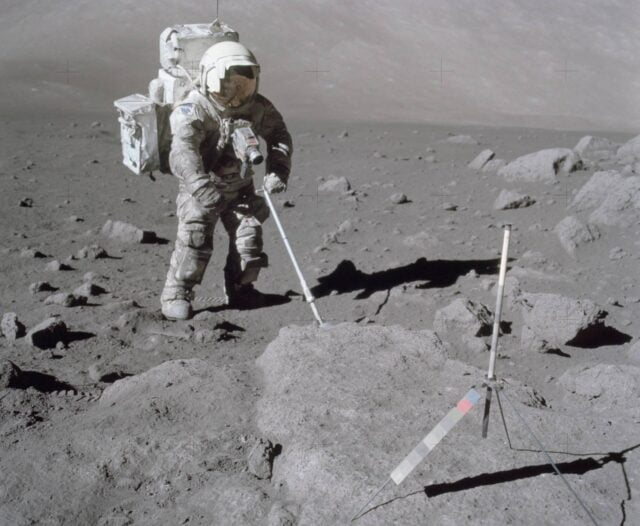
In a groundbreaking revelation, a rock collected during the Apollo 17 mission in 1972 has shed new light on the age and thermal history of the moon. Recent meticulous examinations conducted by a team of geochemists and planetary scientists have unveiled that the moon is at least 4.46 billion years old, challenging previously held beliefs about lunar evolution.
Key Highlights:
- The moon rock brought back by Apollo 17 astronauts in 1972 undergoes new analysis revealing the moon’s age and a significant cooling period.
- The moon is found to be at least 4.46 billion years old, making the analyzed sample the oldest piece of the moon dated so far.
- The analysis disclosed a 20-million-year cooling period in the moon’s history, defying earlier understanding of lunar evolution.
The meticulous atom-by-atom analysis on the crystals from the moon rock has not only clarified the moon’s age but also revealed patterns indicating a 20-million-year cooling period during the moon’s history. This discovery contests the previous understanding of lunar evolution, adding a new dimension to the ongoing study of our natural satellite’s past.
The detailed examination of this 50-year-old rock was driven by the aim of uncovering insights into the moon’s formation and age. The rock fragment, collected by Apollo 17 astronaut Harrison Schmitt during the historic mission, has been a cornerstone for this breakthrough. The new analysis puts the moon at 4.46 billion years old, with the sample now holding the record as the oldest piece of the moon to have been dated so far. This analysis is pivotal as it could aid scientists in understanding the intertwined evolutionary history of the moon and Earth.
The re-examination of the Apollo 17 rock sample has also hinted at a quicker cooling rate of the lunar surface, which was deduced to have occurred in just 20 million years. This finding potentially reshapes the narrative of the moon’s geological history, providing a fresh perspective on its early thermal history.
This remarkable discovery underscores the enduring significance of the samples collected during the Apollo missions, especially the Apollo 17 mission, which marked the last time humans set foot on the moon. The mission, which saw astronauts Harrison Schmitt and Eugene Cernan collecting about 243 pounds of soil and rock samples, continues to unravel the enigmatic history of the moon, even half a century later.
The Apollo 17 moon rock, meticulously analyzed by a team of geochemists and planetary scientists, has revealed the moon to be at least 4.46 billion years old. Additionally, the analysis has uncovered a 20-million-year cooling period in the moon’s history, challenging previous theories of lunar evolution. This discovery not only enriches our understanding of the moon’s geological and thermal history but also emphasizes the lasting value of the Apollo missions’ contributions to lunar science.












